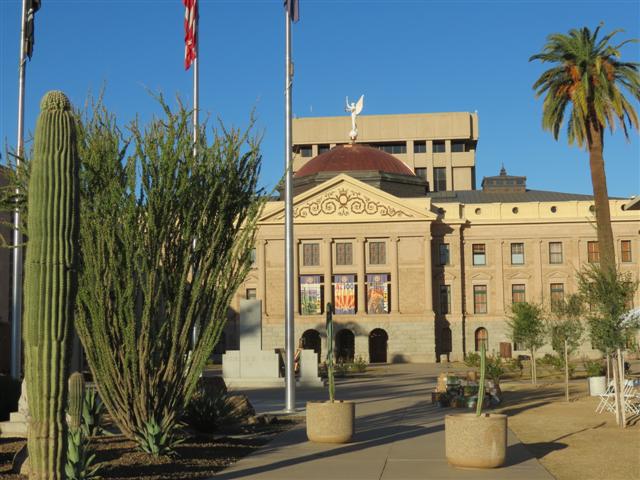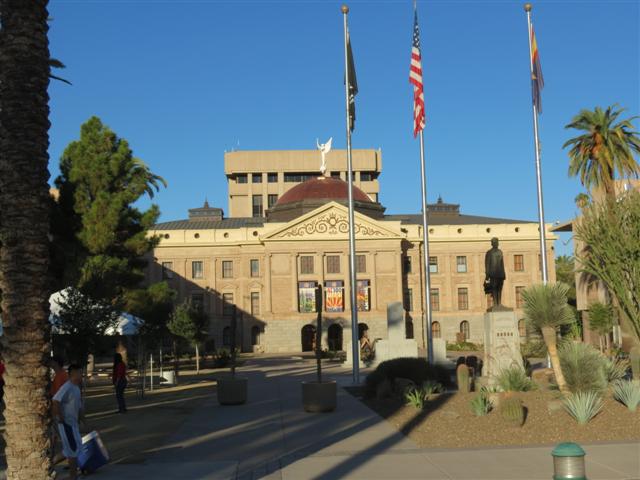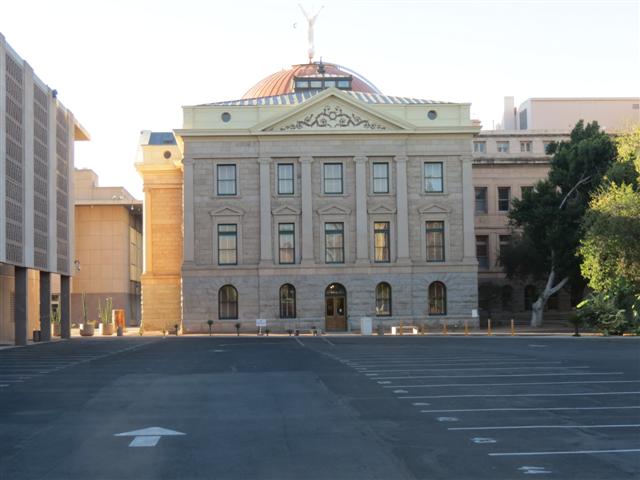


The building is made largely from materials indigenous to Arizona, including malapai, granite, and the copper dome. The design is optimized for the desert climate of Arizona, with thick masonry walls that insulate the interior, skylights, and round "bullseye" clerestory windows to let heat out of the legislative chambers. The building is topped with a windvane similar to the Winged Victory of Samothrace, visible through a skylight from within the rotunda.
Visitors can enter the Historic House Chamber where the Arizona Constitution was written and sit at the desks. There is also a room dedicated to the 140 changes in the Arizona Constitution over 100 years of statehood. The Governor's office on the second floor has a wax figure of Arizona's First State Governor, George W.P. Hunt, and an exhibit that includes a flag used by the Roughriders.
One impressive display shows the enormous silver and copper punchbowl service from the USS Arizona, as well as a bronze sculpture that was ensconced outside the Admiral's stateroom and used as a centerpiece at state dinners where ever the USS Arizona was docked. Both of these historical artifacts survived the sinking of the Arizona because they had been removed from the ship for cleaning prior to the attack on Pearl Harbor. The punchbowl service is the only one of its kind and is composed of etched copper panels depicting desert scenes set into a silver bowl ornamented with mermaids, dolphins, waves, and other nautical themes.


